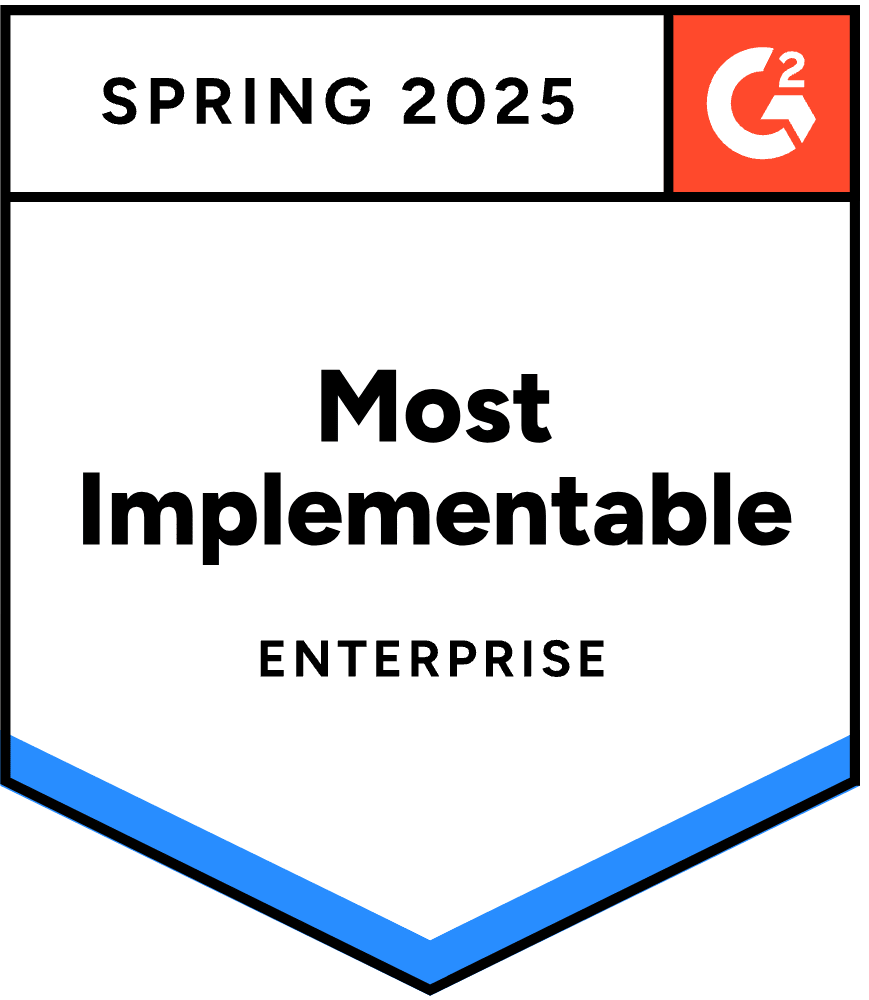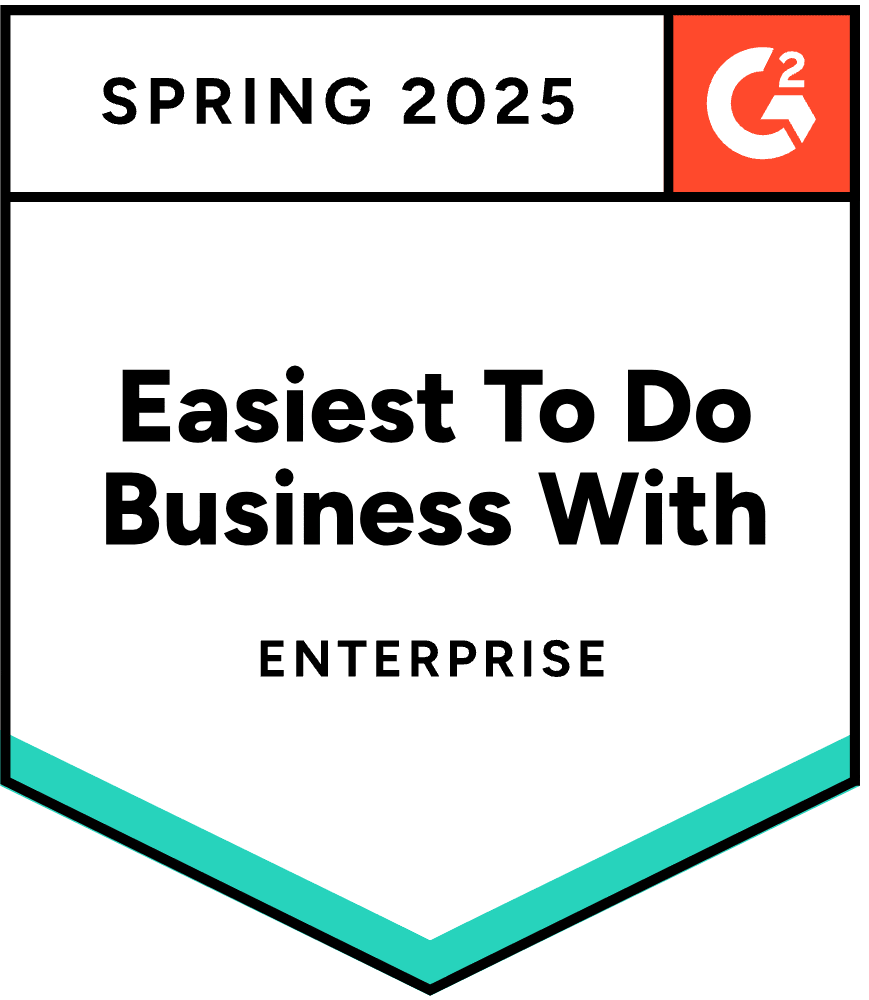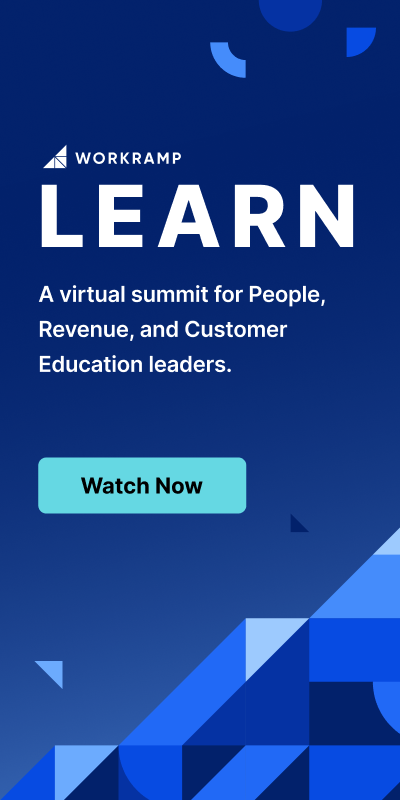How to Measure Customer Education: 8 Metrics You Should be Tracking
Elise Dopson | WorkRamp Contributor
View bioLearning Tips Straight to Your Inbox
An effective, engaging customer education program is vital to improve product adoption, increase customer loyalty, and, ultimately, drive more revenue for your company.
But do you know if your strategy is working?
It turns out many organizations don’t have insight into program performance.
One report found 43 percent of companies are still establishing their measurement program. The top challenge for 57 percent of companies is reporting on customer success and revenue metrics, beating creating and distributing the content itself.
Discover why it’s essential to measure your customer education success and eight metrics to track to improve program performance.
In this post:
Why you need to measure your customer education success
Many training managers start their customer education program as a method to increase sales, reduce customer churn, and improve customer satisfaction.
But if you’re not measuring your program, it’s nearly impossible to determine whether you’re working towards those goals.
A robust approach to measuring customer education allows you to improve customer retention.
Educating your customers often means showing them how to use your product. The more “sticky” your product is, the more likely customers will continue paying for it. You’ll find out which training materials are helping achieve this goal with regular measurement.
Plus, as you acquire more customers, you’ll want to find cost-effective ways to support them without proportionally increasing the volume of required resources.
With customer education metrics, you can identify the materials, content, and formats most likely to support customers and alleviate stress on your support team as you scale. You can serve more customers without proportionally increasing the resources required to provide a world-class customer experience.
How to measure customer education: metrics and KPIs
- Customer education ROI
- Course completion rate
- Learner satisfaction
- Number of support tickets
- Net Promoter Score
- Onboarding completion rate
- Product adoption
- Customer churn
Customer education ROI
One of the most essential customer education metrics is the return on investment (ROI) you’re getting from the program.
A positive ROI means the program is driving more revenue than the cost of running it.
To determine the ROI of your customer education program:
- Calculate the difference between the benefits and the costs invested in training
- Divide this by the cost of operating your customer training program
If this figure isn’t as high as you’d hoped, Tony Vaughn, former Director of Customer Education, Qualified, recommends going above and beyond basic product training. In his roundtable on The Real ROI of Customer Education, Tony breaks down Qualified’s customer education program into three pillars:
- Brand
- Content
- Community
Tony says, “When you have those three pillars in place, and you continue to build and innovate on them, that’s really what allows your customer education programs to show their value, to be able to make a huge impact on your customer success programs—and give you the ability to engage and retain your customers.”
Course completion rate
Are customers engaged in your learning materials?
Course completion rate can shed light on whether training content is engaging and retaining existing customers.
With the Customer Learning Cloud from WorkRamp, for example, you can track completion rates for each part of the program. This is the percentage of people who enrolled in the program and completed each lesson, module, or entire course.
Studies show the average completion rate for online courses is 30 percent. Aside from benchmarking against this metric, understand whether your completion rates indicate success by comparing:
- Completion rate by learning formats. If video-based learning content is 3x higher than text-based content, expand your course content to include more video material, such as expert interviews, demonstrations, or Q&A sessions.
- Completion rate by customer challenges. Onboarding content might get the most views, but are people actually consuming all of the content inside these modules?
Note that this customer education metric can’t be used in silo. A decrease in completion rate might look disappointing on the surface.
In reality, this may happen because people find what they’re looking for—thus indicating your program is doing its job: helping customers solve their problems.
Learner satisfaction
In addition to the volume of courses customers take, satisfaction with the content is a great place to start measuring success.
Ask customers to rate each course upon completion to understand how useful the content is for your audience.
At the end of each module, ask for customer feedback using prompts like:
- How easy was it to understand the course content?
- How satisfied were you with the learning experience?
- How confident are you in achieving [learning objective]?
Get granular with this data to find out which formats, topics, or delivery styles best engage your audience.
You might find that 40 percent of synchronous learners were happy with their learning experience versus 70 percent who preferred the asynchronous option.
In that case, it’d make sense to revise upcoming programs and make them more accessible to users who can’t attend at a given date and time.
Number of support tickets
Customer support is an expensive function for many businesses. It’s also a huge driver for scaling companies to invest in customer education.
As customers leverage your program to onboard, measure the volume of support tickets coming in from those accounts. Is it less than customers who didn’t go through this onboarding experience? If so, that’s a positive sign that your program is having an impact.
“In times like these, organizations are looking to identify cost centers to be efficient about spend. It’s more important than ever to invest and be able to do more with less.”
-Tony Vaughn
Onboarding completion rate
Onboarding any new customer is exciting. Not only does your business get more revenue, but the customer is raring to go. They’re eagerly anticipating access to your product or service.
Onboarding programs exist to guide new customers throughout the early stages of using your product. Email customers once they’ve purchased with a link to find your customer education academy through your customer education platform.
It’s where they’re formally introduced to the brand and product and start to learn how they can use it to solve their own challenges.
Alongside the number of people who start learning, measure how many new customers complete this onboarding program.
If 60 percent of customers start the program but don’t complete the first module, for example, customers likely need reminding to continue learning.
Do this by:
- Encouraging active learners to share what they’ve learned with others
- Using WorkRamp’s Slack integration to remind learners in your online community of the training available to them
- Adding more personalized emails to your post-purchase campaigns to proactively encourage customers to continue learning
Read more: 4 Strategies to Promote Your Customer Education Academy
6. Product adoption
Engaged customers are happy customers—and far more willing to use your company’s products or services repeatedly. They also often respond to upselling and cross-selling, generating more revenue and being more loyal and forgiving.
Show your customers how to get the most out of your solutions. Also known as product adoption, measure metrics like the increase or decrease of active users on the platform and the average time spent interacting with the product.
Track the percentage of users performing key actions for the first time, too. With this customer education metric, you’ll be able to calculate how engaged your learners are and open opportunities for them to provide valuable feedback about how your business can improve—both in terms of its offerings and the overall customer experience.
It’s a KPI where you’re likely to see big changes. Some 20 percent of companies with a customer education program achieve 50 percent growth in people using the product to accomplish their goals.
As a result, almost half of companies see product adoption as the most significant measurable impact from their customer education program.
Net Promoter Score (NPS)
The ideal state for any business is for customers to become long-standing partners and advocates for your brand. Measure if your customers talk to others about their experience.
Net Promoter Score is a measure of customer loyalty. It’s a figure between 1 to 10, with businesses who score on the latter end more likely to have their products recommended by existing customers.
Tie NPS scores back to those engaged in your academy to show a high correlation to happier customers.
If customers enrolled in your online training have an NPS of 8.2 but overall scores sit at 6.7, it’s concrete evidence that your customer education program is successfully retaining customers and turning them into brand advocates.
“By encouraging customers to become MikMak certified with WorkRamp, we’re helping them get maximum value from their investment, building brand equity within our buying centers, and inspiring customer loyalty.”
— Sabena Carim, Director of Effectiveness and Enablement, MikMak
Customer churn
After a customer has engaged in the program for a longer period, you’ll be able to tie retention and expansion rates back to engaged customers.
Track this using customer churn: the percentage of people who cancel their subscription over a given period of time. If you have 100 customers and six of them stop purchasing your product, for example, your churn rate would be 6 percent.
Benchmark your churn rate against the 4.79 percent average for software companies, or find a benchmark for your particular industry.
If you’re falling short, look at how your customer education program is contributing.
Compare churn rates for different customer segments—like those who’ve taken a specific training course or those who’ve never signed into the academy (despite numerous reminders).
You might find that customers who complete your onboarding program have a 4 percent lower churn rate compared to 6 percent company-wide. In that case, you know you’ve hit a winning formula, and you can demonstrate your customer education program’s ROI.
Customer education program timeline
You won’t be able to tie improved retention rates or customer expansion back to the program during the first six months of launching. Getting to long-term business impact results takes time, but you can prove value fast and early.
So, how should you think about validating the value of the program? Picture it as a “crawl, walk, run” approach.
Months 1 to 6: Crawl
In the first six months of your customer education program, it’s all about getting people engaged and knowing what resonates with them.
Answer questions like:
- How many customers register for your program as a percentage of total customers in your base?
- Which courses are your customers taking? How many courses per customer?
- What percentage of customers complete your onboarding program?
Keep in mind that the types of courses customers are taking can give you insight into any knowledge gaps or areas where they need more help.
This can help you tailor your approach to fit their needs and prompt future engagement or lead to upsell opportunities.
Months 6 to 12: Walk
Months 6 to 12 are all about understanding shorter-term KPIs, which help measure account health and customer satisfaction.
In this stage of measurement, question things like:
- Has the volume of support tickets increased or decreased?
- How satisfied are customers with your learning material?
- Which type of learning content (i.e. video vs. text, or asynchronous vs. real-time) have the highest learner satisfaction?
Month 12 and beyond: Run
A year into your customer education program, you can show the long-term business impact on customer lifetime value and retention.
Continue to analyze your KPIs and metrics, answering questions like:
- Has product adoption increased for customers who are engaged in the program?
- Do customers who have engaged in your program have higher retention, upsell or cross-sell rates?
- How has your NPS changed since implementing your customer education program?
How the Customer Learning Cloud helps improve your customer education program
Customer education programs aren’t a set-it-and-forget-it strategy. Instead of constantly creating new material in a bid to engage customers, take a step back and evaluate whether your existing strategy is working.
From ROI to product adoption, use these customer education metrics to monitor the success of your program. It’ll highlight ways to improve and prove the impact on your business’ growth, helping build the case for more investment in customer education.
Learn how the Learning Cloud can help you develop a best-in-class customer education program Contact us to schedule a free, personalized demo.
Complete the form for a custom demo.
Recent Posts
- Why Secure LMS Platforms Are a Must for Regulated Industries July 10, 2025
- Top LMS Integrations That Power Smarter, Faster Learning July 2, 2025
- Introducing WorkRamp Analytics Studio: Unlocking Your Data Insights with AI June 30, 2025
- 11 AI LMS for AI-Powered Learning June 27, 2025
- The Best LMS Platforms for Customer Retention (2025 Guide) June 27, 2025
Elise Dopson
WorkRamp ContributorElise Dopson is a freelance writer for B2B SaaS companies. She’s also the co-founder of Peak Freelance and mom to an adorable Spaniel pup.
You might also like
Learn how a customer education program can help you boost engagement and retention
An effective customer ed program can help users and have a significant impact on long-term business goals.
Read More
Your Company Needs A Unified Training Platform
WorkRamp is the leading unified training platform for customers like Slack and Zoom. Train internal employees and customers using one system.
Read More
Employee onboarding tactics that work
A good onboarding process equals a good ROI. Learn how to make your onboarding process more effective.
Read More
Decrease Ramp Time and Increase Revenue
Get in touch to learn how WorkRamp can help you achieve your learning and development goals.
Request a Demo




